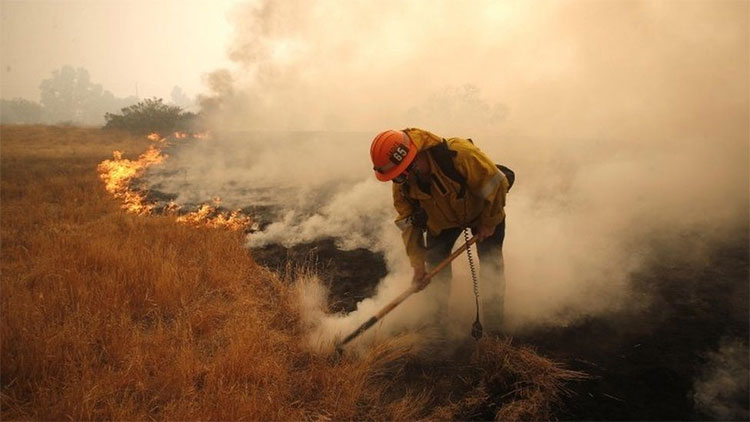Cover the sun to block ... global warming
Scientists from both US and Harvard universities have proposed an idea to combat global warming by using chemicals to reduce the intensity of sunlight.
According to recent research published in the journal Environmental Research Letters, they suggest that if spraying a large amount of sulfate particles into the stratosphere of the Earth at an altitude of about 20km (thereby softening sunlight), may reduce half of the impact of global climate change.
Radio RT said the plan could be implemented within 15 years with an initial cost of about $ 3.5 billion, followed by another 15 years with a cost of $ 2.5 billion - a relative price low in terms of scale and significance of the project.
Initially, a fleet of 8 ships will transport chemicals, then expand to nearly 100 ships to transport the amount of chemicals needed worldwide. Chemicals that can be transported to the stratosphere can be shot by airplanes, hot air balloons or cannons.

The US 4th National Climate Assessment warns forest fires to increase if climate change is not controlled.(Photo: EPA) .
However, there are many technical limitations to the plan that scientists themselves admit to this "hypothetical nature" . Currently no aircraft carries a large amount of chemicals into the air while the idea of using SpaceX's Falcon Heavy heavy rocket is excluded due to being too expensive.
Scientists also acknowledge that sulfate spray into the stratosphere can affect crop yields, lead to drought or cause severe weather, while not addressing greenhouse gas emissions - causes of goods. Head causes global warming.
In addition, the plan requires multilateral coordination, including the United States, while US President Donald Trump frequently expressed doubts about. The skeptical view is once again reflected in the White House statement for the 4th US National Climate Review published on November 23.
According to an assessment carried out by many US government agencies, the United States will suffer hundreds of billions of dollars - from infrastructure to agricultural production - along with damage to human health, quality of life and speed of economic development because of climate change at the end of this century.
The report attracts attention for two reasons. First, it is not abstract, but offers many concrete examples such as the spill in South Carolina, the impact of cultivation in the Great Plains, and the growing insect diseases in the state of Florida. it focuses on the economic impact, challenging the White House's declaration of "prioritizing economic growth instead of environmental regulations".
In response, White House spokesman Lindsay Walters said the report was inaccurate because "mainly based on the most extreme scenario".
- Proposing to cover the Sun to cope with global warming
- Global warming delays the next ice age
- Global warming can erase the Olympics since 2085
- Video: 135 years of global warming summed up for more than 30 seconds
- Scotland faces 'apocalypse' because of global warming
- The reason for the worsening winter is despite the global warming climate
- Where will the sea level be highest due to global warming?
- Nature helps curb the global warming
- Global warming threatens the safety of flights
- Global warming has terrible consequences
- Two Vietnamese granaries will be submerged in the sea after 5 years?
- Sea water can rise by 6m in the future
 Is the magnetic North Pole shift dangerous to humanity?
Is the magnetic North Pole shift dangerous to humanity? Washington legalizes the recycling of human bodies into fertilizer
Washington legalizes the recycling of human bodies into fertilizer Lightning stone - the mysterious guest
Lightning stone - the mysterious guest Stunned by the mysterious sunset, strange appearance
Stunned by the mysterious sunset, strange appearance